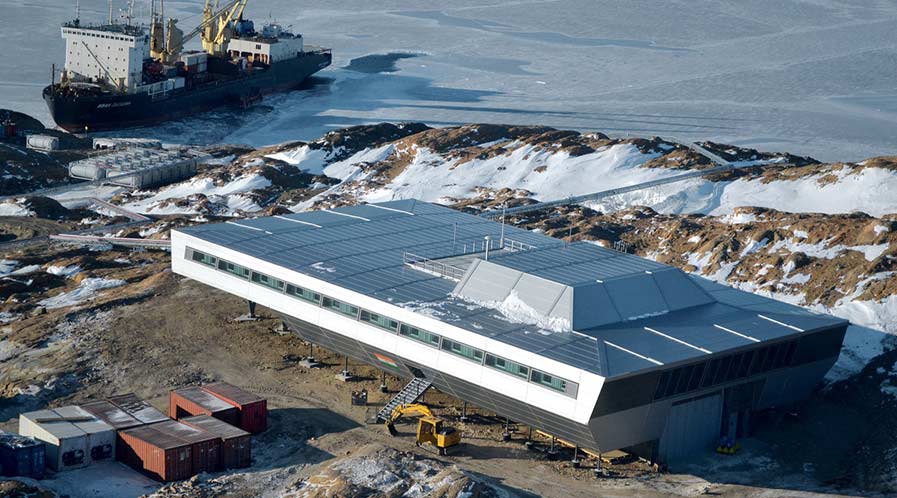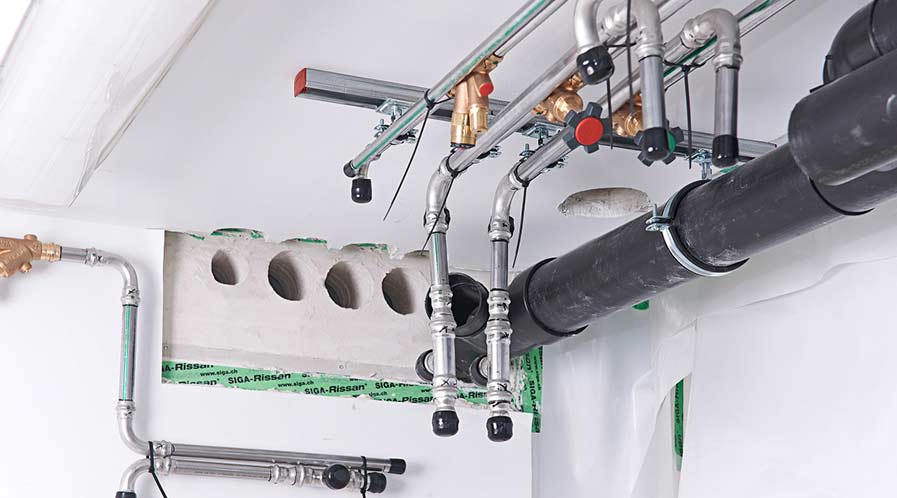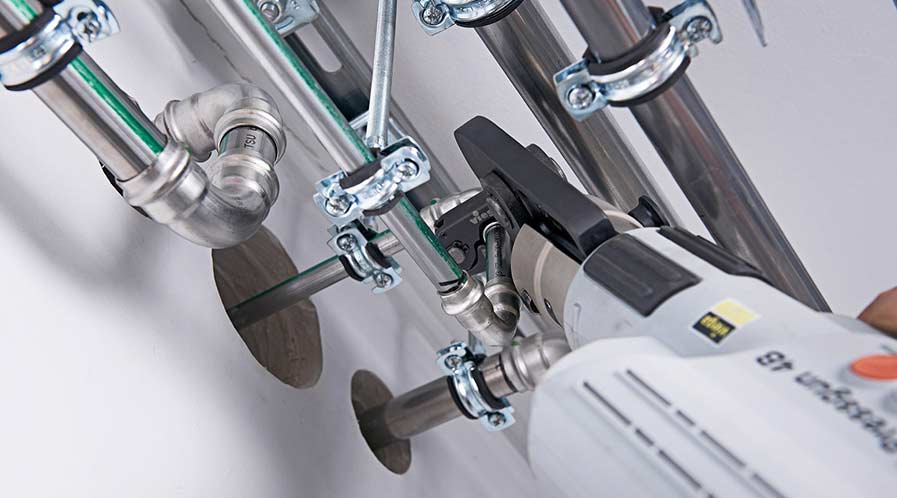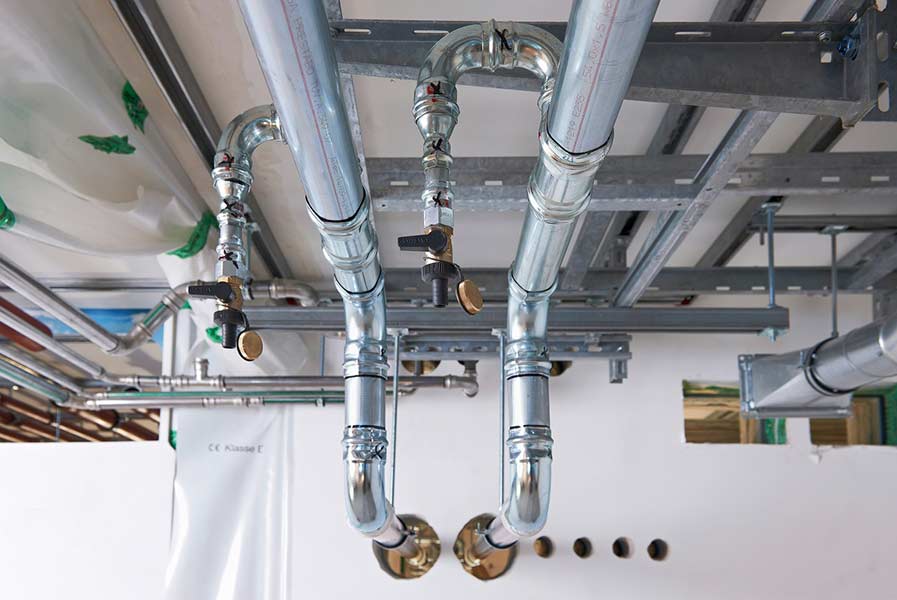Plumbing in Sub-Zero Temperature
Viega installed a piping system in Bharati research station which guarantees water supply even at minus 40°C. Such solution can be useful for Himalayan regions where temperatures notches below the freezing level.
Germany-based Viega Group, a leading manufacturer of installation technology for sanitary and heating, was entrusted with the installation of piping system for heating and drinking water for the Indian “Bharati” research station in the eastern Antarctic region. The research centre was recently commissioned by the National Centre of Antarctic and Ocean Research (NCAOR), which belongs to the Indian Ministry for Geoscience.
Extreme weather conditions where temperature could fall as low as minus 40°C posed a challenge in maintaining water supply used for heating and drinking at the research station. Specially tested piping systems from Viega were used for heating and drinking water installations that are proven for years to be reliable in such extreme conditions even in Antarctica.
Careful research was carried out to determine which piping system is best suited to the specific conditions with the “Bharati” research station. For example, YIT installed the heating system with the electrolytically galvanised steel pipe of the “Viega Prestabo” pipe system with about 2,500 metres in the nominal widths of DN 18 to 54.

The company further informed that in order to prevent freezing of the heating water in the system, Glycol-L was admixed in a concentration of 57%. “Viega laboratories specially studied the reaction of EPDM sealing element rings of the press connectors and confirmed it is safe to use even in such extreme conditions. In addition, the qualifications for operating temperatures of less than minus 40 ° C was tested to a maximum pressure of 6 bar,” the company informed.
For drinking water, “Viega Sanpress Inox” made of stainless steel 1.4521 were used. “Three pipework ranging from DN12 – DN40 were made to run cold water, hot water and household wastewater. A constant hot water temperature of 60°C is guaranteed by Viega Easytop – circulation control valves with thermal disinfection device to protect against legionella.”

Impact of sub-zero temperature on plumbing
Sub-zero temperatures creates many challenges for the plumbing systems.
- Failing hot water systems are a common problem in the winter due to pervasive cold weather, and water heating issues in general are one of the most common reasons plumbers are called into action at any point of the year.
- This colder water causes pipes to contract and this contraction often causes leaks from areas of the pipe that had weakened over time.
- Frozen pipes are a common household occurrence during cold weather months and are caused by high water pressure from the main combined with below freezing temperatures.
- The most obvious giveaway of a frozen pipe is restricted water flow.
- A water line leak or break will cause severe damage to the houses. Frozen garden hoses can lead to this damaging occurrence. When a garden house is left connected following a freeze, the ice within the hose will gradually build up pressure in the house’s water lines, eventually leading to a leak or break if it is not attended to.
- Restricted water drainage can be caused by snow on the ground in the area surrounding pump discharge line. Snow blocking this drainage area can cause water back-up and freezing.

Plumbing Tips for Sub-zero temperature region
Institute for Business and Home Safety (IBHS) offers following tips to prevent damage for freezing and bursting pipes in sub-zero temperatures
- Pipes in attics and crawl spaces should be protected with insulation or heat. Pipe insulation is available in fiberglass or foam sleeves. Home centres and hardware stores have sleeves providing 1/8 to 5/8 inches of insulation; specialty dealers have products that provide up to 2 inches of insulation.
- Heating cables and tapes are effective in freeze protection. Select a heating cable with the UL label and a built-in thermostat that turns the heat on when needed (without a thermostat, the cable has to be plugged in each time and might be forgotten). Follow the manufacturer’s instructions closely.
- Doors on cabinets under kitchen and bathroom sinks should be left open during cold spells to allow the warmer air of the room to circulate around the pipes.
- Exterior pipes should be drained or enclosed in 2-inch fiberglass insulation sleeves.
- Pipes leading to the exterior should be shut off and drained at the start of the winter. If these exterior faucets do not have a shut-off valve inside the house, have one installed by a plumber.
- Hoses should be removed and stored inside during the winter.
- Let faucets drip slowly to keep water flowing through pipes that are vulnerable to freezing. Ice might still form in the pipes, but an open faucet allows water to escape before the pressure builds to where a pipe can burst. If the dripping stops, it may mean that ice is blocking the pipe; keep the faucet open, since the pipe still needs pressure relief.
Tags: Bharati Research Station, Plumbing, Plumbing solutions for hilly regions, Sub-Zero Plumbing, Viega



